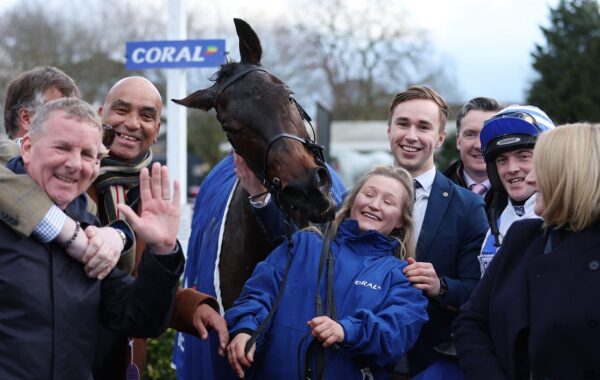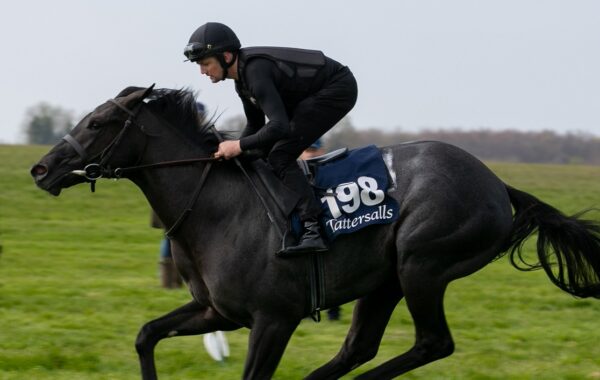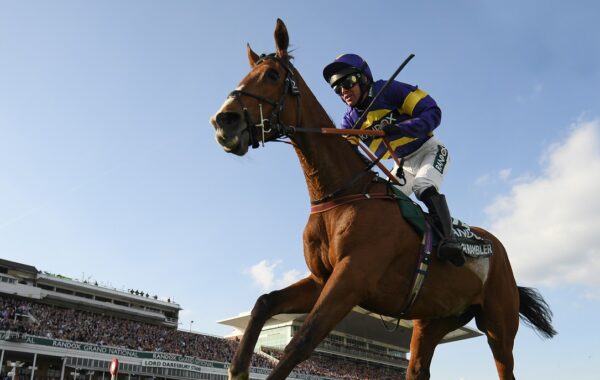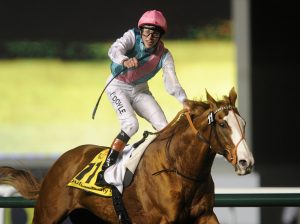Any skin-deep comparison of racing in Britain and Ireland would suggest they run along parallel lines. The reality is somewhat different. In terms of funding, race planning, market drivers and government involvement, the two industries are chalk and cheese.
They do, however, share one thing in common. The global economic meltdown has sharply eroded fat deposits that accumulated in better times.
For Ireland, the Celtic Tiger was a hallucinogenic mirage. Years of overseas investment and rapidly escalating property prices brought a sense of financial impregnability.
The windfalls affected everyone, from high-rolling traders to small farmers who sold land tracts for small fortunes. And in the inimitable Irish way, a popular source of spend with this new-found wealth was to buy a racehorse.
“Four or five years ago we had a situation where everybody wanted to have a horse, or a leg of a horse,” says Horse Racing Ireland (HRI) Chief Executive Brian Kavanagh.
“The number of horses in training and the annual foal crop were unsustainable,” Kavanagh continues. “They have come down significantly since then. I’m sure people in Britain appreciate that the Irish economy has been really terrible. That has had a knock-on effect and there has been a massive readjustment.”
That much is true of Britain, although the adjustment has been less pronounced. But there are signs that the Irish racing and breeding industry has turned the corner.
HRI’s half-year publication of trends in July saw most sectors post improved figures on the corresponding period in 2012. Crucially, the number of horses in training showed no appreciable fall. The foal crop showed a similar trend, while prize-money and race sponsorship recorded mild advances.
“There have been gains in many respects,” Kavanagh says, “but it is too early to call it a recovery.”
Kavanagh’s guarded tone within a positive overall picture is amplified by the most important litmus of any recovery. The number of new owners in Ireland remains on a resolutely downward spiral: registrations fell by 11% in the first half of 2013.
“Finding new owners is a major challenge,” Kavanagh concedes. “In March we appointed an executive within Irish Thoroughbred Marketing (ITM) to specifically target new owners.
“Against that, the number of active owners has stabilised somewhat, and because the number of horses in training is also stable it tells us that existing owners, the bigger operations, have more horses. We are seeing that in the National Hunt sector.”
The stabilisation in Ireland has been driven by the combination of an unyielding commitment to attractive prize-money and high-profile exports. The two concepts are intertwined: a rewarding and selective race programme makes the winner of any race a saleable commodity at a time when Irish-bred horses are thriving on the international scene.
Yet the process has been abetted by a government receptive to the cause. While Irish racing’s annual government contribution has receded over the last five years, ministers recognise the sport’s importance – in particular the breeding industry – to rural employment.
“One of the key differences between Britain and Ireland is that we very much promote our sector in that way,” Kavanagh says.
“It’s easier to do that in a small country such as ours. Despite other recent developments in IT and pharmaceuticals, Ireland is still largely agriculture-based. Politicians are more in tune with it. It would be very difficult to get that message across in Britain.”
To emphasise his point, Kavanagh highlights the size of each country’s annual foal crop relative to their human populations. “If you wanted to establish the same ratio of foals-to-babies in Britain that are born in Ireland, the British foal crop would have to number 50,000,” he says. Last year’s British foal crop numbered 4,366.
Although prize-money in Ireland has suffered during the recession, it is a relative thing. The minimum value of any race is fixed at €7,000, although the majority of races on the lowest rung carry purses of €8,000.
Even though its 2013 budget was cut by €1.5 million, prize-money levels were ring-fenced. And HRI is determined to raise minimum race values to €10,000.
This puts prize-money for Britain’s glut of all-weather races to shame. Part of the reason is that Ireland keeps a firm grip on the number of fixtures. It can afford to, since prize-money is no hostage to betting turnover, as it is in Britain.
There is a formula by which the Irish government’s annual contribution to racing is calculated. Even when government revenues from racing leave a shortfall, the amount is topped up from central government funds – as has happened during the recession.
“It’s not something we ever wanted to see, or something you can really justify when there are cutbacks in schools and hospitals,” Kavanagh admits.
The idea that a British government would ever help racing in this way is a non-starter. Yet this annual contribution enables HRI to plan in advance with a budget unaffected by levy yield from betting turnover.
Irish racing received €47m from government this year. That contribution is one of two principal sources of funding, the other being the sale of media rights. Those rights were worth around €25m in 2013 but it is safe to assume the imminent signing of a new deal with At The Races will see that figure rise.
Irish racing also stands to gain from the government’s determination to capture betting tax, at 1%, from offshore bookmakers. The Betting Amendment Act was published in July and is scheduled to come into force in the autumn.
This will advance the government’s betting tax revenues from €26m to €40m, in the process ensuring that HRI can operate effectively. It can do so entirely in the sport’s best interests.
In consequence, HRI can draft a fixture list with an entirely different set of priorities to its British counterpart. No entries are accepted for horses with a rating below 44 on the Flat. This is a controversial policy but HRI wants to encourage owners to discard such horses in favour of reinvesting in new ones – with positive knock-on effects for the bloodstock sector.
Indeed, the emphasis on quality is so pronounced that 10% of all races run in Ireland carry prestigious black type.
“We police those black-type races rigidly by enforcing quality control on the ratings of the races,” Kavanagh says. “These races reflect the quality of our breeding sector, which in turn creates demand for Irish-bred horses around the world.”
At times, Irish breeders and vendors are more concerned with what’s happening with British racing than what’s happening in Ireland
This is a world away from a British model forever gravitating towards maximising betting turnover. Such a model could never work in Ireland. Or at least, the racing industry would be a very different animal had it been financed by a turnover-based levy.
“We just don’t have the volume of product,” Kavanagh says. “We have only 25% of the races run in Britain every year. We have less than 10% of the number of betting shops in Britain, yet we have a breeding industry twice as big.”
That latter detail underlines just how reliant Ireland is on exporting bloodstock, together with attracting overseas investors to participate on her soil. Bloodstock output far exceeds domestic demand – all the more so for its collective value, thanks to the quality of its leading stallions. Britain is Ireland’s principal export market, so any development is closely monitored.
“At times, Irish breeders and vendors are more concerned with what’s happening with British racing and issues like prize-money than what’s happening in Ireland,” Kavanagh says.
“In that respect the two spheres are very closely integrated,” he continues. “We obviously want to see British racing doing well and there are positive signs coming out. That is hugely important to us because we want British buyers to come here and buy horses.”
That last sentiment applies to owners everywhere. And the strength of Ireland’s product abounds. Ireland had its most successful Cheltenham Festival in March, with 14 winners. It matched its best-ever showing at Royal Ascot with eight winners. And further afield, Irish-bred horses filled the first seven places in the November renewal of the Melbourne Cup.
Such deeds are hard currency for HRI’s marketing arm, Irish Thoroughbred Marketing (ITM), whose funding has been cut and whose activities occasionally draw criticism from some of Ireland’s racing professionals. Kavanagh defends the outfit robustly.
“I don’t accept the criticisms,” he says. “I would like to spend more money through ITM because its success is judged on the number of Irish horses sold abroad, the number of overseas buyers coming here to buy horses, the number of people coming over to buy stud farms and the horses they keep in training here.”
Kavanagh’s polished rebuttal amplifies his skills as a communicator, an individual renowned for listening more than he talks, and one who can dance in between delicate lines without taking a false step.
Formerly general manager at the Curragh, the man from a non-racing background advanced to Chief Executive of the Turf Club and subsequently Chief Executive of HRI, which took over many a Turf Club remit on its inception in 2001. The transition marked a difficult time for many within Ireland’s closely-knit racing community, yet Kavanagh managed it smoothly.
Although he makes a plausible case for Ballydoyle’s exceptionally high standards acting as a spur to competitors in raising the bar, it will be interesting to see whether new owners in the post-Celtic Tiger era view that as a deterrent and gravitate towards jumping.
Whatever comes to pass, the Irish racing industry has taken its diverse interests and largely unified them within the HRI boardroom. Board members recognise the importance of putting Irish racing’s collective interests ahead of the insignias on their hats – and within a small industry, some are obliged to wear two or three of those.
It is no mean feat to run a sport in which the world’s most potent racing and breeding empire engages alongside the 50-strong pub syndicate. Racing in Ireland is many things to many people, but it certainly punches its weight.
‘Irish Champions Weekend has been two years in the planning’
The creation of Irish Champions Weekend has affronted both Doncaster racecourse and Ladbrokes, sponsor of the St Leger, highlight of the four-day festival which will clash with Ireland’s new initiative.
The two-day meeting, scheduled for September 13-14 next year at Leopardstown and the Curragh respectively, will host at least ten Group races – five of them Group 1 – as Ireland becomes the third European country to establish an end-of-term championship.
“Irish Champions Weekend has been in the planning for about two years,” says Brian Kavanagh, who also chairs the European Pattern Committee (EPC). “The mid-September slot was vital [to us] as it fits perfectly with the Arc and British Champions’ Day.
“It was also logical because the five Group 1 races [Moyglare Stakes, National Stakes, Matron Stakes, Irish Champion Stakes and Irish St Leger] have all been run in the first two weeks in September in recent years.”
Ireland’s initiative shuts the door on Champions’ Day in Britain ever relocating to a mid-September slot. It is now locked into a mid-October date, although the EPC had received no British application for a change of date since Champions’ Day’s inception three years ago.
“The focus [of Britain’s presentations to the EPC] has been on getting its Champions’ Day races upgraded,” Kavanagh says. “Changing the date would be extremely problematic from a Pattern point of view.”
However, Kavanagh defended Ireland’s initiative, saying: “Doncaster has always clashed with either the Irish St Leger meeting or the Irish Champion Stakes meeting for each of the last 22 years. No new Pattern race clashes are created by this move, certainly not at Group 1 or Group 2 level.
“In fact, the European Pattern would be improved by moving the Irish Champion a week later, and therefore, a week further away from the Juddmonte International at York.”
Nor was he surprised that Britain’s representative on the EPC approved the Irish weekend within a unanimous endorsement from member countries. “The overall impact on the European Patten is positive,” Kavanagh maintains.
“Looking at the big picture, this opens up wonderful possibilities for end-of-season championships and Triple Crowns in each of the major categories. Some details concerning the races have yet to be finalised but the changes are generally positive.”
One welcome development for owners who may have runners at both venues on September 13 next year is that the Leopardstown card is likely to start some time after Doncaster’s earlier kick-off.
Whether that is sufficient for the Doncaster/Ladbrokes axis to continue with the St Leger on that day remains to be seen.






